 We have been living in this bizarre version of life for 10 months.
We have been living in this bizarre version of life for 10 months.
Ten months! Can you believe it? Ahh, that fateful day back in March…Who would have ever thought that life could change so drastically?
As a two-teacher household with three school-aged children, I remember how excited my kids (and if we’re being honest, my husband and I) were at the thought of a bonus two-week hiatus. Living in Maryland, we don’t get much of a spring break and had no snow days last year. I remember packing just a few things from my office (you know, just in case I wanted to get a little work done) and walking out the door with the assumption I’d be back in a couple weeks.
Oh, how naive we were! As we watched COVID blow up and everything shut down, reality sunk in that this was not going away any time soon, and as the infamous year of 2020 exited with the drop of the ball in a deserted NYC, we found ourselves in the same holding pattern as the previous ten months.
If your experience was anything like mine since March, it may have included a huge mix of emotions. Many of which were not pleasant.
Sadness that my fifth grader was going to miss the last few months of his “top dog” year of elementary school and that my kindergartner was robbed of her first school experience with an amazing teacher whom she adored. Sadness about the end of mornings and afternoons with the rearview mirror focused on my youngest as he rode with me to his preschool. It all came to such an abrupt end with so little closure.
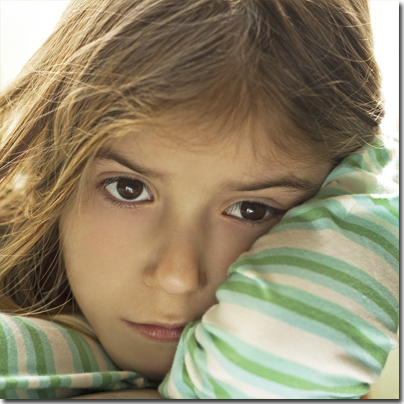 Anxiety about keeping our family safe, particularly my high-risk mother- and anxiety about the reality that keeping her safe meant my kids not seeing their grandparents for an extended time. Anxiety about what this meant for the academic success of my kids and my students and the long-term effects that will likely interlace itself into the years to come.
Anxiety about keeping our family safe, particularly my high-risk mother- and anxiety about the reality that keeping her safe meant my kids not seeing their grandparents for an extended time. Anxiety about what this meant for the academic success of my kids and my students and the long-term effects that will likely interlace itself into the years to come.
Overwhelmed by the complicated dance of three school-aged children and two teaching adults in one rather small home. Where would we all go to learn? How would we help our children while we are also teaching? How will we all handle being stuck at home all the time? Will our kids all hate each other by the end of this? Will my husband and I? (Just kidding, babe- I don’t hate you…yet!)
Back in the beginning, it was hard to see the possible positives that could come out of the pandemic. To be completely honest, the day-to-day rat race even ten months in can still cloud our view of the positives. The day often seems to close itself out with everyone exhausted, sometimes slightly annoyed, maybe feeling like a little space could be used, and overwhelmed at the thought of doing it all over again tomorrow.
However, if we take a deep breath and a few seconds to reflect, there are many positives to this situation that cannot be ignored.
Hard to believe?
Although we are still in the thick of social distancing and mask wearing, there will eventually come a time when we will again watch the party scene in a movie without cringing.
While this global pandemic seems unique to our generation, it is far from the first disruptive crisis in our history. Take, for example, the Great Depression. While the thought at the time was that the psychological effects of being a child during The Great Depression would scar them from life, a study by Glenn Elder showed otherwise.
While the children in the study did indeed carry certain scars into adulthood, the economic deprivation they experienced was also strongly correlated with greater workplace success and higher frequency of taking advantage of educational opportunities. Perhaps most interestingly, these children also scored higher on psychological testing that measured resilience, determination and self-confidence and reported greater contentment and happiness.
So while our fears about the effects of the pandemic may be real, it’s also quite real that there is a paradoxical effect playing itself out in our children- building positive traits that will outweigh the negative.
Do I have you interested now? Read on to see the top six positive outcomes of the COVID-19 pandemic and quarantine.
#1: There is No “Me” in “We”
 While it cannot be coined to every millennial in the world, there is a certain level of entitlement that tends to be labeled with the generation that came before our children, particularly those on the younger side of those years.
While it cannot be coined to every millennial in the world, there is a certain level of entitlement that tends to be labeled with the generation that came before our children, particularly those on the younger side of those years.
A Reason-Rupe Poll from 2014 showed that 71% of Americans view millennials as selfish and 65% see them as entitled. Another study from the University of Hampshire on millennials born between 1988 and 1994 showed scores 25 percent higher in entitlement-related issues than their 40 to 60 year old counterparts and 50 percent higher than those over sixty.
The reasons for this? Well, deciphering the ‘how’ is not as simple as taking a quick poll. As with every part of development, overprotective parenting tendencies such as helicopter parenting likely has something to do with it. Most young adults who demonstrate selfishness and entitlement have been led to believe, at some point in their lives, that they are more special than those around them. And while we all believe that our own children are special, the harsh reality is that to the world, they are no more special than the next.
As we are all well aware, COVID does not recognize entitlement or selfishness and it doesn’t care if you were raised to believe you are the most special person on the face of the earth. Remember when Tom Hanks and Rita Wilson announced they had it? I mean, I’d say Tom Hanks is pretty dang special–but Corona didn’t care!
Maybe our kids don’t know who Tom Hanks is, but they are surely hearing and watching us model a “we” mindset as they watch us take steps to not just protect ourselves, but their grandparents, their friends with compromised immune systems, and even the stranger at the store.
How can we better encourage “we” thinking in our children during COVID?
- Be purposeful in labeling why we social distance and wear masks, linking it to the same reason that others are doing it. For example, explain to your child in the store how everyone is wearing a mask and keeping distance because we all have a responsibility to keep each other safe.
- Use analogies that children can relate to. For example, the kid who is into team sports can be reminded how protecting each other is just like what you do during the game with your teammates.
#2: Empathy is Da’ Bomb
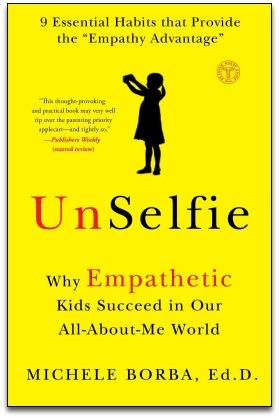 I thought about lumping empathy in the above section, but decided it’s such an important quality that it needs its own special call-out. In fact, Michele Borba, Ed.D., in her book “Unselfie: Why Empathetic Kids Success in Our All-About Me World,” goes so far as to say that empathy is the number one trait that children need to be happy and successful. Dr. Borba proposes:
I thought about lumping empathy in the above section, but decided it’s such an important quality that it needs its own special call-out. In fact, Michele Borba, Ed.D., in her book “Unselfie: Why Empathetic Kids Success in Our All-About Me World,” goes so far as to say that empathy is the number one trait that children need to be happy and successful. Dr. Borba proposes:
“a revolutionary but simple idea that will transform our kids’ lives: that empathy–rather than being a nice ‘add-on’ to our kids’ development–is in fact integral to their current and future success, happiness, and well being.”
While the most recent studies indicate that a part of empathy is innate (including some super-cool studies on the reactions of babies to their mothers’ show of emotions), there is also no doubt that nurturing and encouraging empathy allows it to blossom into a trait that allows our children to “feel” for others.
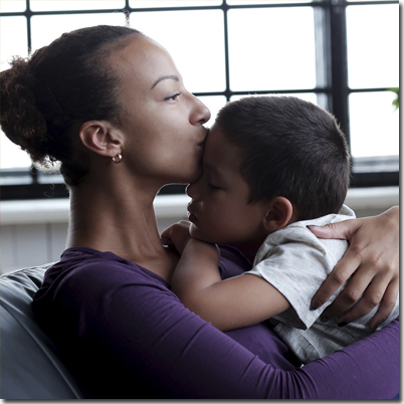 Luckily for us, the universe is handing us a PERFECT situation to demonstrate and encourage empathy. At this point in the game, most of us unfortunately have personal experience with loss; whether it’s someone close to us or an acquaintance. And while the sickness itself has been a widespread requirement for empathy, so has the side effects of the pandemic: loss of jobs, loss of homes, inequalities in access to healthcare, inequalities in what children have at home to support a positive virtual learning experience. There is SO MUCH in the world right now to be empathetic about.
Luckily for us, the universe is handing us a PERFECT situation to demonstrate and encourage empathy. At this point in the game, most of us unfortunately have personal experience with loss; whether it’s someone close to us or an acquaintance. And while the sickness itself has been a widespread requirement for empathy, so has the side effects of the pandemic: loss of jobs, loss of homes, inequalities in access to healthcare, inequalities in what children have at home to support a positive virtual learning experience. There is SO MUCH in the world right now to be empathetic about.
How can we take loss and the other negative situations that COVID has a hand in to encourage empathy in our kids?
- Break down barriers! Martin Hoffman, a leading empathy expert, makes the point that we are more likely to empathize with people in our immediate circles. If we keep our children sheltered to the differences of people unlike us, how can we expect them to develop empathy? During a time of quarantine when physically interacting with others may be more difficult, we can give our children these experiences through literature and conversations about how those of different races, countries, gender, and socioeconomic status may be affected differently by COVID.
- Allow kids to have a voice. Dr. Borba emphasizes the importance of allowing kids to have an active part in sharing their opinions and hearing out the opinions of others.
- As a follow up to the above suggestion, keep in mind how much the use of electronics can diminish face to face conversation. Look at more old fashioned games where families can continue conversations or even games that may provoke opportunities for sharing.
#3: Imaginative Play Makes a Comeback
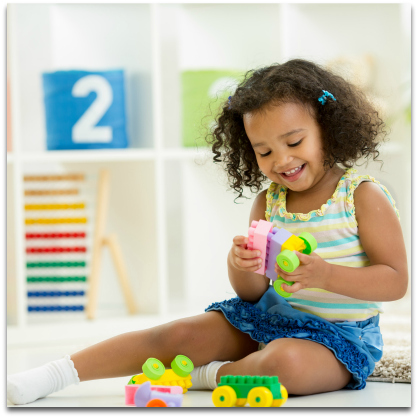 My family has been lucky enough to live in the same neighborhood as our “best friend” family during quarantine.
My family has been lucky enough to live in the same neighborhood as our “best friend” family during quarantine.
Also, teacher-parents and with two children of similar ages to my kids, we made the choice early on to hunker down together in a quarantine bubble.
This has not only been a sanity-saver for us adults, but it has been fun to watch our five children replay games that I remember playing in my childhood-during an era in which gaming systems, social media, the internet, cell phones, and iPads did not exist.
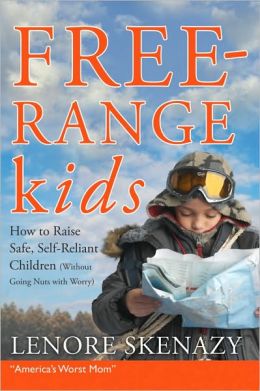 During the long months of summer, it became a neighborhood joke that our kids were sick of us and planning to move out as they spent hours outside, creating “houses” with various beach toys, jump ropes, and cardboard boxes.
During the long months of summer, it became a neighborhood joke that our kids were sick of us and planning to move out as they spent hours outside, creating “houses” with various beach toys, jump ropes, and cardboard boxes.
In her book, “Free Range Kids,” Lenore Skenazy remarks that play is essential to childhood; so much so that it is the “key to all the things we dearly hope our schools are teaching our kids.”
In just the five years from 1997 to 2002, the amount of time that the average six to eight year old spends on creative play has declined by a third. This statistic is both shocking and scary!
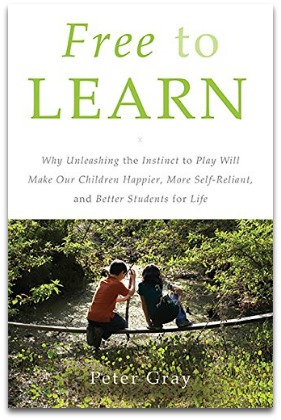 As developmental and evolutionary psychologist Dr. Peter Gray explains masterfully in his book “Free to Learn,” creative play is crucial for building skills that lead to success in school and adulthood.
As developmental and evolutionary psychologist Dr. Peter Gray explains masterfully in his book “Free to Learn,” creative play is crucial for building skills that lead to success in school and adulthood.
While imaginative play can happen outside of quarantine, let’s face it-there has been a heck of a lot more time for it lately.
How can we help encourage our children to engage in imaginative play?
- Save all those Amazon boxes! Kids can build houses and cars with them and they can later be broken down and drawn on.
- Sometimes we all just need a little prompting. Pulling out toys and setting them in plain sight can be all your kids need to play with them. Bonus points for setting up a dinosaur or action figure world, all ready to go!
- Make time to play with your kids and allow them to take the lead in play. Teach them some of your childhood games such as Hopscotch, Spoons etc. that they may not even have heard of! While we may be busy, the positive outcomes of making time for play that build strong relationships and help relieve stress are more than worth it.
#4: Flexible as a Rubber Band
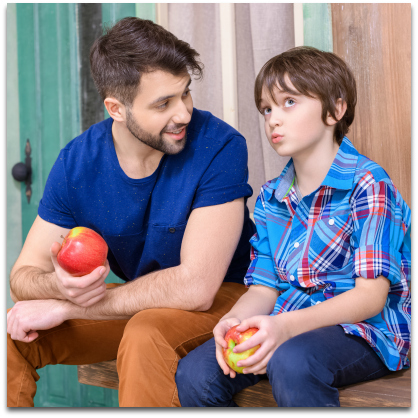 The ever changing profile of COVID restrictions has also lent itself to a need for some serious flexibility-both in children and adults. Even with as careful as we have been, as small as our bubble is, and as diligently that we may quarantine before going to see my mom, I know there is always a chance that something can change that will affect our plans.
The ever changing profile of COVID restrictions has also lent itself to a need for some serious flexibility-both in children and adults. Even with as careful as we have been, as small as our bubble is, and as diligently that we may quarantine before going to see my mom, I know there is always a chance that something can change that will affect our plans.
My kids have clearly picked up on this open mindset, as they will often repeat what they hear me say such as “As long as we are all safe to be around Gaga” and “If we have to change our plans, that’s okay. Coronavirus will not last forever.” While it’s become a sort of mantra for my own flexibility, my kids are watching and adopting it.
The age-old social learning theory reinforces that humans learn by watching others. This was proven by the infamous Bobo doll experiment. As children watched adults treat the doll a certain way, it was found that when it was their turn to interact with the doll, they mimicked the adults almost exactly.
A recent study from the Association of Behavior Analysis International focused on parent psychological flexibility and self-compassion during COVID-19. Focus on the flexibility of parents comes from a recognition that parents need to learn to take care of themselves before they can take care of their children.
The study’s suggestions, given in hashtag format, are noteworthy tips for parents:
- #smallthingsmatter: break long-term goals into small “kernels” to make them more manageable and flexible
- #everythinginteracts: we can’t control everything, but we can control some things… and ultimately much of our world is interlaced in some way
- #meaningmatters: taking a moment with your child communicates to them that they mean something
#5: Family Memories to Last a Lifetime
 While the pandemic may be a time for stress and worry for us adults, it’s quite possible that our children may look back on this time as the best year of their lives.
While the pandemic may be a time for stress and worry for us adults, it’s quite possible that our children may look back on this time as the best year of their lives.
I mean, look at it from a child’s point of view-the entire family home all the time, activities that kept us running from sunrise to sunset cancelled, little obligation outside of each other, and lots of time for playing, family movies, and other activities.
Even for older children who may be missing their friends, this time period is allowing for family memories to happen that they will likely remember with detail even when they are in their golden years. Just imagine them one day telling their own grandchildren about the time that the “world closed down.” Wouldn’t it be great if they had some fond memories to share of this turbulent time?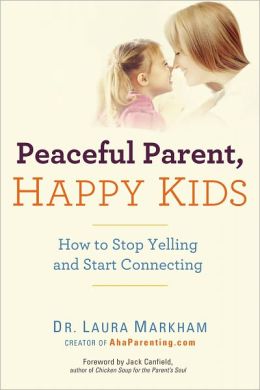 Dr. Laura Markham’s focus on the importance of connection fits beautifully here. Dr. Markham, in her book “Peaceful Parent, Happy Kids,” explained how any separation from our children causes a disconnect; which is why it is so important to take the time to reconnect to them afterwards.
Dr. Laura Markham’s focus on the importance of connection fits beautifully here. Dr. Markham, in her book “Peaceful Parent, Happy Kids,” explained how any separation from our children causes a disconnect; which is why it is so important to take the time to reconnect to them afterwards.
This does not just apply to physical separations, but also those separations that happen when we are preoccupied with things outside of our children (such as working from home or doing chores around the house). When reconnecting with your child, it’s important to do so without distractions- giving them our full attention and listening to what they may have to say. Being home together more often during this time does not necessarily mean that we are or can be (or for that matter should be) always focused on our children!
While we are making purposeful attempts to reconnect to our children throughout days of possible chaos, we can also make purposeful choices about the memories we offer them.
Perri Klaus, MD, suggests that parents get a little “goofy” during quarantine. This could include some ideas such as:
- Suggest silly family rituals or make up jokes or songs
- Have dance-offs or sing-alongs
- Pull beloved childhood books back out and read them to older children
- Create a family diary or video montage to document your days
Editor’s Note: check out our Family Time Capsule Printable here.
- Put together and edit recreations of favorite movies or books
And don’t forget about the amazing, safe, outdoor adventures you can have with your family! I never realized how many kid-friendly and fun trails we have easy access to until we decided to upload the All Trails app to our phones.
#6 I REALLY Missed That
 In addition to schools being shut down in March, my oldest son’s travel baseball program shut down before the season was even able to start. The team was allowed to start practicing (with lots of restrictions) at the end of June, in anticipation of a very shortened three week season.
In addition to schools being shut down in March, my oldest son’s travel baseball program shut down before the season was even able to start. The team was allowed to start practicing (with lots of restrictions) at the end of June, in anticipation of a very shortened three week season.
My son was a fifth grader during this time and although he talked about missing his friends, he showed an amazing amount of adaptation to the circumstance. I did not realize (nor do I think he realized) just how much he missed baseball or being around his buddies until he got back into the car after that first practice back. He was GLOWING.
We know the feeling, right? Simple acts, like doing the grocery shopping without having to dodge people like a ninja down the aisles, eating at a restaurant, seeing family or friends any time we’d like and the simple act of smiling at a stranger as we pass each other.
It was the Roman poet Sextus Propertius who, in his play Elegies, gave the earliest form of the phrase “Absence makes the heart grow fonder.” Clearly, the truth behind it has not faded with time.
The practice of gratitude rituals is also not new. Robert A. Emmons, a psychology professor at University of California, Davis reminds us that “gratitude is a choice, not an emotion.” We can do this as a personal way to remind ourselves of all we have to be thankful for (or excited to one day have back)–but we can also make it a family practice.
Some ways to incorporate gratitude in your family’s fabric are:
- Make gratitude part of dinner conversation or bedtime rituals.
- Keep a gratitude journal as a family; older children can contribute by writing and younger by drawing.
Editor’s Note: check out our 3-2-1 Positivity Journal printable here that has a strong built-in focus on gratitude.
- Get dry erase markers and encourage children to leave gratitude notes or drawings for each other on mirrors around the house (and of course parents should join in too!).
- Start a bedtime meditation routine, with one meditation focused on thinking about something we are grateful for.
- Even a short gratitude prayer could go a long way. Sumitha says her favorite time of the day when her daughter was young was their bedtime routine which always ended with the prayer: “Thank you Lord for the wonderful life we have. Please bless us with health, happiness and peace. Amen.”
- Shifting the gratitude focus to what may be coming in the future that we will be grateful for when we find ourselves in crisis mode and having a hard time being presently grateful.
In the time it has taken you to read this, people all over the country have gotten their first or second round of the vaccination. There is an end in sight and hopefully we are closer to that side than we are to the beginning. Eventually the world will return to full-swing and COVID and quarantine will be addressed in a sentence that begins with “remember when.”
And while the history books, museums, and whatever else is resurrected as a way to remember, may focus on the loss, devastation, inequalities, sacrifices, and sadness that was part of this time, that doesn’t mean that it all has to be bad. Children are resilient and like all humans, adversity can often teach them more than the easy moments. Take a breath. We can do this!
2-Minute Action Plan for Fine Parents
Take a few minutes to self-reflect on your own growth during the pandemic. Use the following questions to guide your journaling or internal conversation:
- What can I be thankful for during the pandemic?
- What are ways in which I have felt empathy for others who have faced challenges during this time?
- Have I modeled my thankfulness and empathy for my children and/or have I had conversations with my children about how we can do our part to have a “we” mindset?
- What family memories or new family hobbies will we come out of the pandemic with?
- What are some games I used to play as a child that I loved and that I could teach my kids now?
- What is a mantra I can adopt for myself and my family to encourage flexibility during this time?
The Ongoing Action Plan for Fine Parents
As you continue with your family’s personal journey during this strange time, commit to being purposeful on a daily basis. This may include a purposeful choice in any of the six areas just discussed, in all of the areas, or anything in between! Utilize journaling, voice recording, or video montaging to document the changes you see in yourself and your family! Some ideas may be:
- Make the commitment to comment on how people wear masks to take care of each other every time you and your children go somewhere.
- Make the commitment to use dinnertime conversation starters to discuss the different struggles that people are facing during this time; your own struggles; what you are grateful for; and allow space and time for your children to share.
- Set aside time to teach your children a game you used to play in your childhood.
- Start a list of “uncontrollables” that you can add to as they happen. Counter-balance it with writing down the part of each situation that you DO have control of.
- Set aside a night every week for a family movie or dance-off.
- Choose a gratitude practice that is fitting for the age group of your children and commit to it for a month.
This article is full of so many assumptions. First of all, it assumes that most families have a mother and father and several kids. It is clearly written by a mother with 3 kids and a husband. A big family! The story is so different in smaller households, lets say with a mother and a teenage son. The teenage son will never look back to these years thinking they were perhaps the best year of his life as described in this article. He is stuck at home with a single mother who ends up doing everything by herself. There are many other scenarios I can come up with and each one would not be able to come up with all the great positive outcomes described in the article. Yes for sure we all need to be grateful but this article is simply an insult for those families who do not have the privileges described from the family structure in this article.
Sibel, thanks for your feedback! Yes, my examples are clearly specific to the personal stories that I can share. The suggestions given, however, are valid for all family structures and sizes, including single parent households, only-child households, and blended families; as well as families with parent(s) working from home or not working from home. Older children can absolutely benefit from adopting a “we” mindset, practicing empathy, time set aside to spend together with minimal distractions, and recognition of the things we are grateful for. In fact, I would go so far as to say that these are also all reminders that can be useful for us, as adults. You may have made the assumption that my personal examples are coming from what you indicate as a “typical” family structure; however, my family is blended/co-parented. The purpose of this article is to remind us that there can be positive outcomes to even the most difficult of situations. In a world that can easily be so negative right now, we (as parents) can focus on the silver lining… knowing that our children absolutely will take our cues to do so.